ELAR 4.10
Author's purpose and craft: listening, speaking, reading, writing, and thinking using multiple texts. The student uses critical inquiry to analyze the authors' choices and how they influence and communicate meaning within a variety of texts. The student analyzes and applies author's craft purposefully in order to develop his or her own products and performances. The student is expected to:
- (1) explain the author's purpose and message within a
text;
- (A) explain how the use of text structure contributes to the author's purpose;
- (B) analyze the author's use of print and graphic features to achieve specific purposes;
- (C) describe how the author's use of imagery, literal and figurative language such as simile and metaphor, and sound devices such as alliteration and assonance achieves specific purposes;
- (D) identify and understand the use of literary devices, including first- or third-person point of view;
- (E) discuss how the author's use of language contributes to voice; and
- (F) identify and explain the use of anecdote.
- Free Plan

Metaphors Worksheet
Practice identifying and using metaphors with this differentiated metaphors worksheet.
- Free Plan

Onomatopoeia Words - Vocabulary Display
Display a fun onomatopoeia word wall in your classroom with printable cards containing onomatopoeia examples.
- Plus Plan

Narrator and Point of View Digital Quiz
Discover how narrator and point of view can be taught in a fun and engaging way with this interactive quiz designed to help elementary students become confident readers and critical thinkers.
- Plus Plan

Types of Point of View in Literature Poster
Teach the types of point of view in literature with this classroom poster that explains first person, third person limited, and third person omniscient narration.
- Plus Plan

Sequence Persuasive Text Examples – Cut and Paste Worksheets
Use this example persuasive text pack to teach your students about sequencing arguments in a logical order.
- Plus Plan

Author's Purpose Sentence Stem Flashcards
Assist students in identifying the author’s purpose with this set of Author’s Purpose Sentence Stem flashcards.
- Free Plan
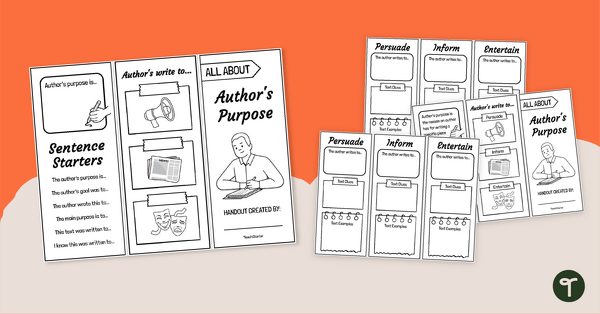
Free Author’s Purpose Handout
Use this Author’s Purpose Handout in the form of a brochure to explore the different reasons authors write.
- Plus Plan
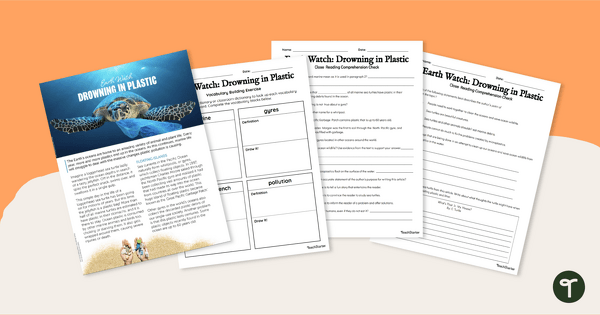
Earth Watch: Drowning in Plastic - Comprehension Worksheet
Practice reading comprehension skills and learn about microplastic pollution in our oceans with a reading comprehension activity.
- Free Plan

Sensory Chart Graphic Organizer
A graphic organizer for students to use when categorizing sensory details.
- Plus Plan

Comprehension Strategies – Interactive PowerPoint
An engaging 44 slide interactive PowerPoint to use in the classroom when introducing comprehension strategies.
- Plus Plan
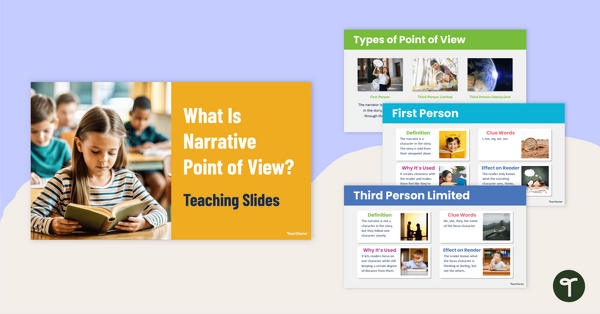
What Is Narrative Voice? Teaching Slides
Answer the question “What is narrative voice?” with this engaging slide deck that helps students understand first person, third person limited and third person omniscient narration.
- Plus Plan

Comparing Narrator’s Voice Worksheets
Teach how narrator’s voice shapes the reader's experience of texts with this set of worksheets where students compare passages written from different points of view.
- Plus Plan

Point of View in Narration Booklet
Explore point of view in narration with this engaging mini book that helps students analyze the narrative voice of a book they have recently read.
- Plus Plan
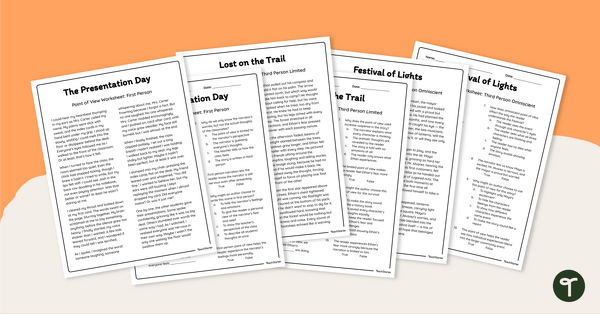
Narration and Point of View Worksheets
Use these narration and point of view comprehension passages to help students explore different narrative voices in literary texts.
- Plus Plan

Mood Anchor Chart- Literary Element Poster
Introduce your students to mood, the atmosphere-creating literary element, with a printable Mood Anchor Chart.
- Plus Plan

Author’s Purpose Activity - Digital Task Cards
Explore Author’s Purpose with this set of engaging and interactive Author’s Purpose Activity digital task cards.
- Plus Plan

Author's Purpose PowerPoint
Use this Author's Purpose PowerPoint to teach your students how to identify the author’s purpose in a text.
- Plus Plan

What is the Author's Purpose? Escape Room
Get your students excited to practice understanding what is the author’s purpose with this engaging escape room activity.
- Plus Plan
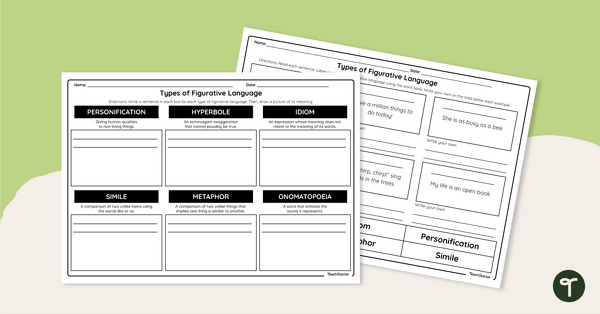
Types of Figurative Language - Worksheet
Practice identifying and creating examples of figurative language with this printable worksheet.
- Plus Plan

Figurative Languages Lesson - Slide Deck
Teach figurative language using our comprehensive instructional slide deck and accompanying activities.
- Plus Plan

4th Grade Writing Worksheets: Tornado Text-Based Writing
Enhance your students' comprehension, vocabulary, and writing skills using 4th Grade writing worksheets and a high-interest reading passage about Tornadoes.
- Plus Plan
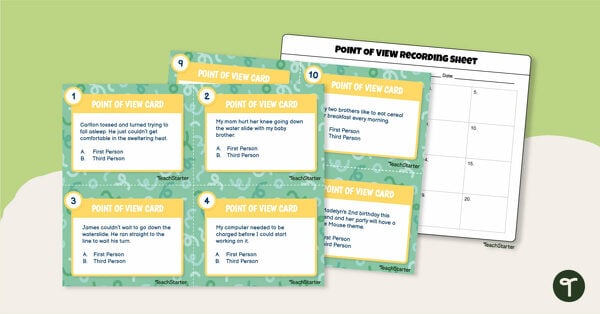
Point of View Task Cards - Beginner Set
Use these colorful, fun task cards to help your beginning reader identify first, and third-person point of view (POV)
- Plus Plan

Writing With Alliteration Worksheet
Identify and create alliteration patterns in texts.
- Free Plan

Author's Purpose - Sorting Worksheet
A teaching resource to help teach your students about author's purpose.
- Plus Plan

Poetry Analysis Template
A template for students to use when analyzing a poem.
- Plus Plan

Figurative Language Anchor Charts
Display the types of figurative language with a set of printable figurative language anchor chars.
- Plus Plan
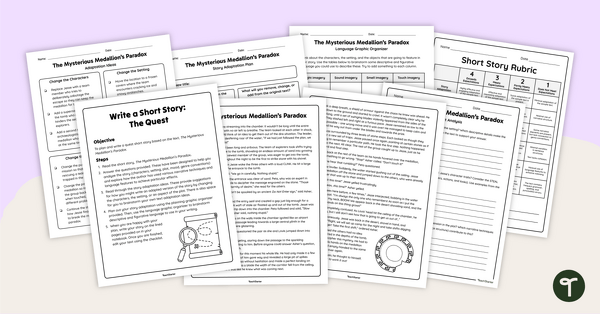
Write a Short Story – The Quest
Get your students analyzing and writing a quest story with this engaging and fully scaffolded writing project booklet.
- Plus Plan

Write a Short Story – Adventure in Space
Get your students analyzing and writing adventure in space stories with this engaging and fully scaffolded writing project booklet.
- Plus Plan

Narrative Voice Writing Prompts
Explore narrative voice with this set of engaging worksheets that require students to write literary passages in different points of view.
- Plus Plan

Author’s Purpose to Persuade Flipbook
Help students explore the Author’s Purpose to Persuade with this engaging and interactive flipbook.
- Plus Plan

Author’s Purpose to Inform Flipbook
Help students explore the Author’s Purpose to Inform with this engaging and interactive flipbook!
- Plus Plan

Author’s Purpose to Entertain Flipbook Template
Help students explore the Author’s Purpose to Entertain with this engaging and interactive flipbook.